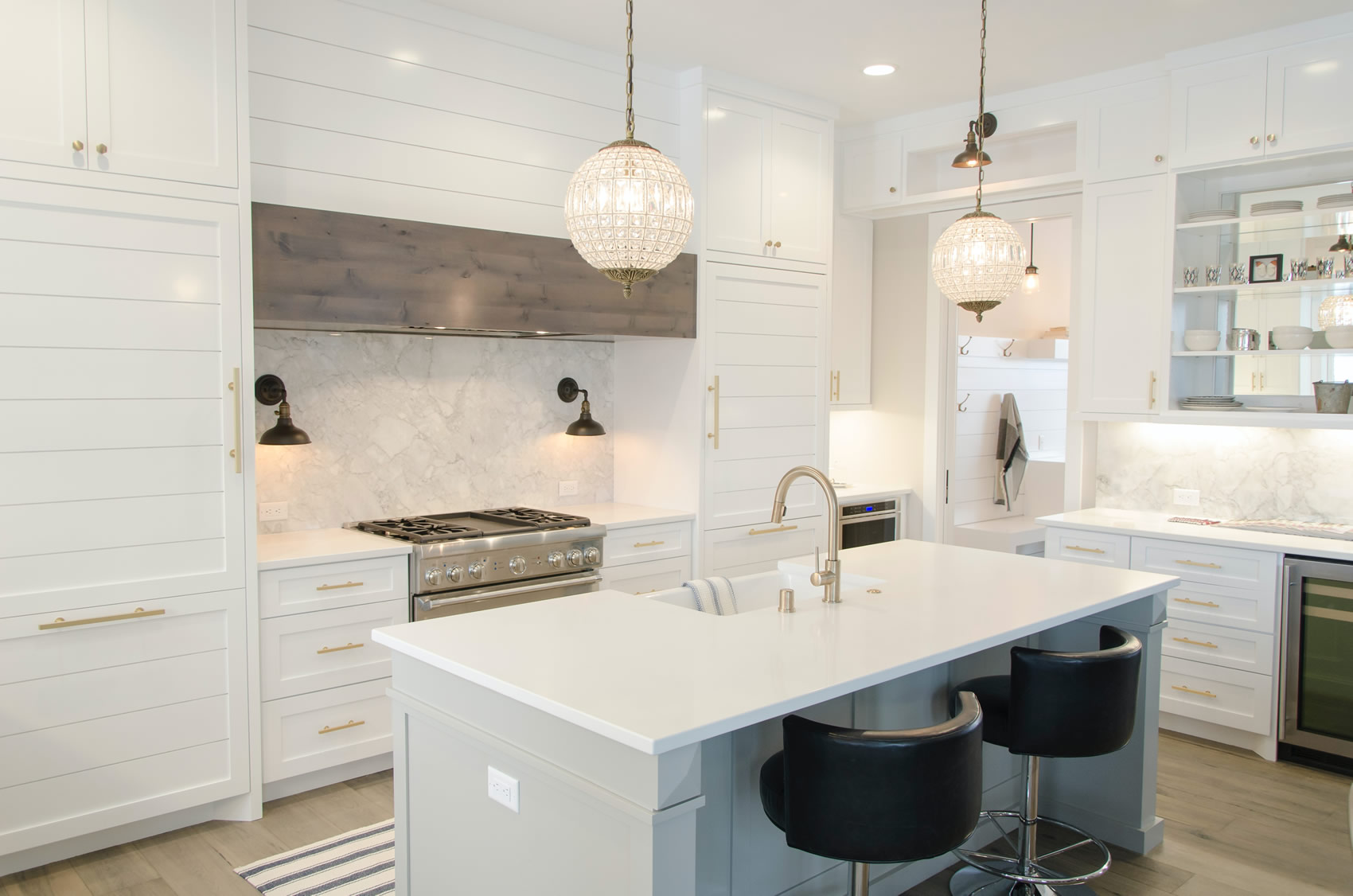The kitchen work triangle: A guideline to obey or dismiss?
Remodelling a kitchen or constructing it from scratch can be overwhelming, considering you have to juggle all the trends, rules, and concepts in this domain and adjust them to fit your cooking area. In most instances, having a guideline as a starting point can prove helpful if you decide to DIY and don’t rely too much (or at all) on a specialist in kitchen design.
This is how the “kitchen work triangle” has come to fruition and spread since it emerged at the University of Illinois School of Architecture in 1940. The kitchen design was intended to reduce construction costs and facilitate cooks’ activities by locating the components that cooks use the most closely together.
Despite being designed with cost reductions in mind, the layout was widely implemented in kitchens striving for more efficiency, and it kept reigning for decades.
Now, is it still relevant, and is it in line with your kitchen’s vision and functionality? Let’s see how experts approach this model and determine whether it suits your cooking room and style or if you should adopt another one.

What exactly is the kitchen work triangle?
As the name suggests, there are three points that you should consider when approaching this kitchen model: the oven and stove, the kitchen sink, and the refrigerator. The guideline states that their elements should be arranged to form a triangle so you can conduct daily tasks without obstacles or impediments. All the triangle sides should measure between four and nine feet, and, when possible, the perimeter should revolve around 13 to 16 feet.
In simpler terms, it shouldn’t be too small or too large but just enough to allow easy movement between key areas.
Is the kitchen triangle still helpful, or is it completely absurd?
The idea behind this concept is to arrange their main points of interest to remove congestion and facilitate movement between them. Depending on how your kitchen is laid out, they shouldn’t be too close or too far apart. However, regardless of the shape and size of your room, it all comes down to finding the model that suits your lifestyle and preferences. Sometimes, more family members cook at the same time, so this model might not make sense anymore in situations where the frequently used parts are arranged in a manner that follows strict, rigid guidelines.
The concept of the kitchen triangle design can potentially enhance efficiency in specific kitchen setups. However, according to various kitchen experts, including those at www.kitchenwarehouseltd.com, modern families’ dynamic and evolving needs and lifestyles mean this model may only be universally suitable for some households. In contemporary kitchens, you’ll find various elements such as countertops, cabinets, islands, and features meticulously designed to enhance cooking functionality and facilitate movement between critical areas.
The three points of the kitchen triangle
Usually, the sink is the centre of focus in any kitchen without an island. It should be considerately placed on the room’s perimeter, with islands for these elements being common in kitchens. Supplementary sins aren’t considered in this plan. Moreover, it’s important to consider the placement of your dish storage and dishwashing machine. Ideally, position the dishwasher near the sink to minimize the need for excessive movement when unloading the machine and placing dishes in their designated storage area.
The refrigerator represents another critical point in the plan. Since you likely don’t bring items back and forth, this element can be safely placed away from the other two points.
Additionally, there’s a common assumption that when the oven and stove are kept separate, they should ideally be positioned at a distance of two to three feet.
Advantages
Resorting to the kitchen triangle model should enable more flexible movements between the three main sections of the room, unimpeded by any obstacle. The whole point is to make the space more ergonomic without adding more floor space to the kitchen. Kitchen triangles are often considered for this main reason – to convey consistency between the rest of the home and the cooking room. Traversing the spaces should be easier since there are no obstacles in your way, and the layout is delimitated so that your circulation is not restricted.
What makes this kitchen design desirable is the fact that the layout is easily accessible and memorable. Numerous kitchen concepts may seem more sophisticated, overdeveloped, or attractive, but they’re often more complicated to understand and implement. If it’s convenience and simplicity that you’re looking for in your new kitchen, this model might prove a suitable option for you.
Disadvantages
Conversely, this kitchen layout isn’t exactly suitable for any kitchen, especially one with abstract shapes or small sizes. Kitchens with cooktops, island sinks, or peninsula countertops may instead make the room look cramped or even make it impossible to apply the “kitchen triangle rule”. Similarly, implementing this model in large open-plan cooking spaces might not be very easy.
Just like with other “rules” or “schemes”, applying a wrong pattern to your kitchen may result in you unfolding your daily activities or hampering your creativity. As such, weighing numerous factors before deciding what layout and style your kitchen will have is essential. The kitchen triangle may seem appealing, but it is unsuitable for all kitchens.
Despite the model’s potential, designers often disregard the kitchen work triangle model.
Despite the buzz created around the “kitchen work triangle” idea, designers are not entirely convinced by this concept. For what is worth, designing and overhauling your kitchen should ultimately come down to how much functionality and practicability you can attain. The kitchen triangle that focuses on the three primary sections of the room doesn’t necessarily work in any type of kitchen.
You may need more than one workspace to perform your daily activities, which is too much to fit in just one triangle. Otherwise, the space layout can sometimes weigh more on homeowners’ redecoration decision-making than a simple rule.
This kitchen model has much potential but is not a strict and rigid rule. Adjustments and flexibility are the keys to designing a cooking space that meets most, if not all, of your needs.
